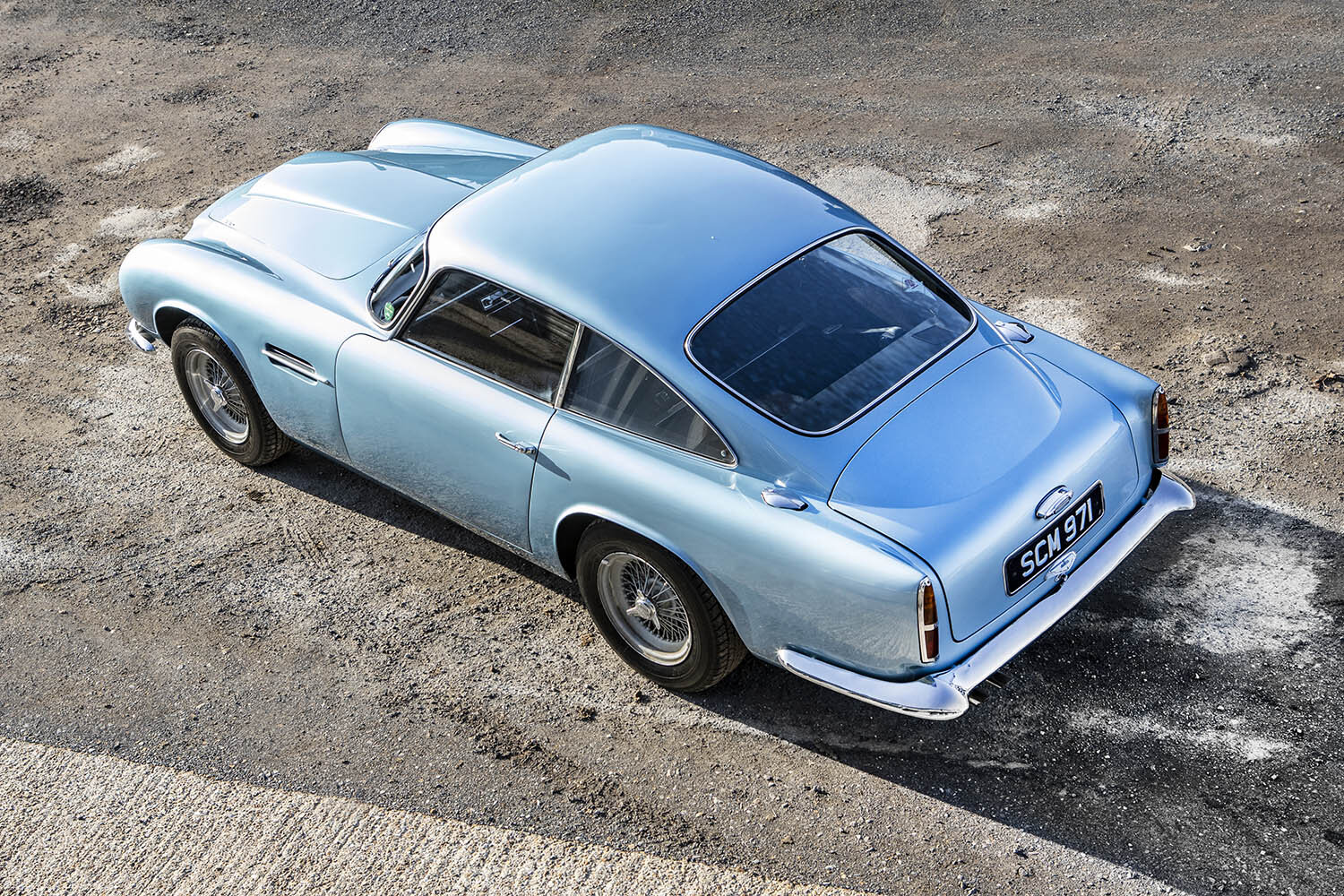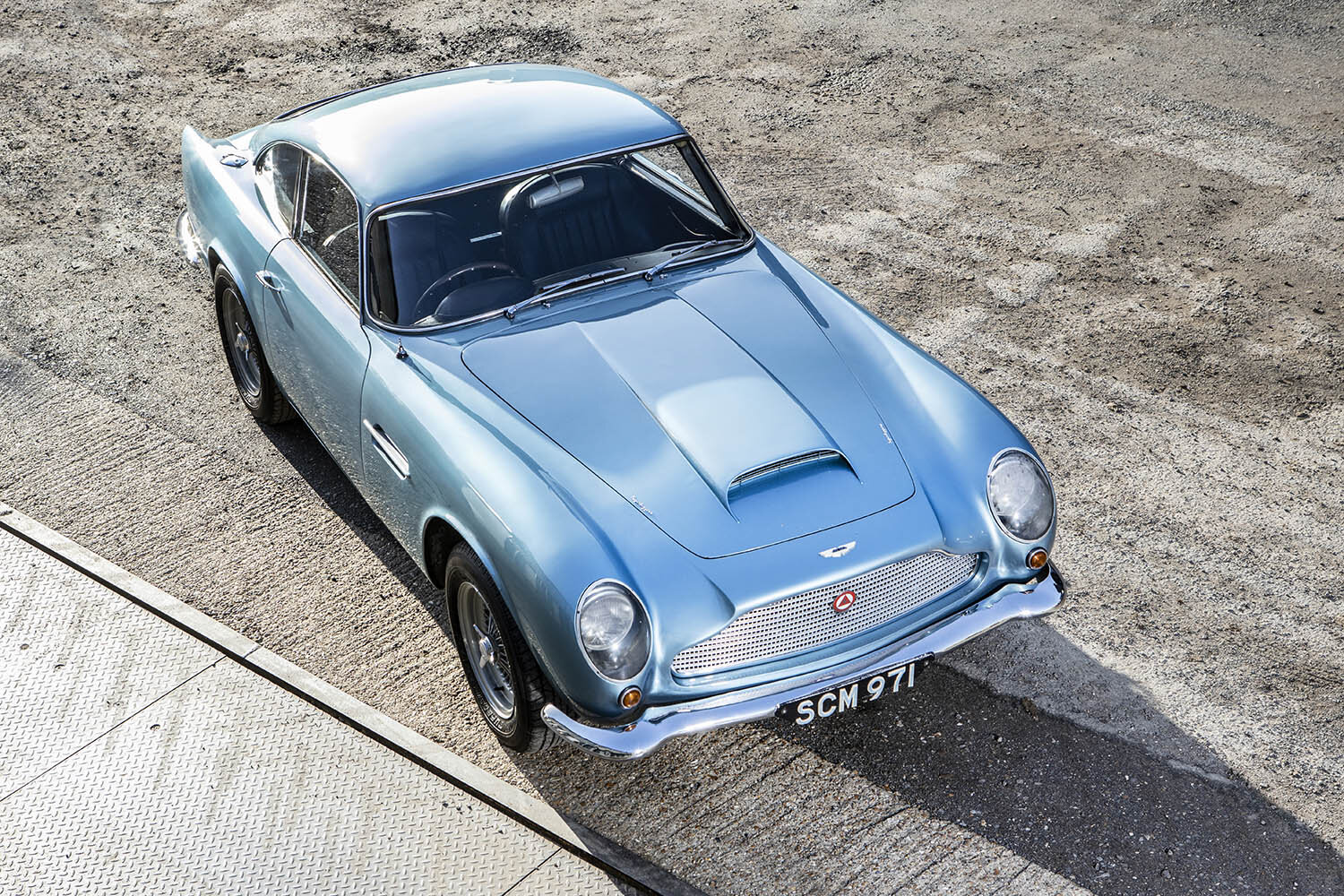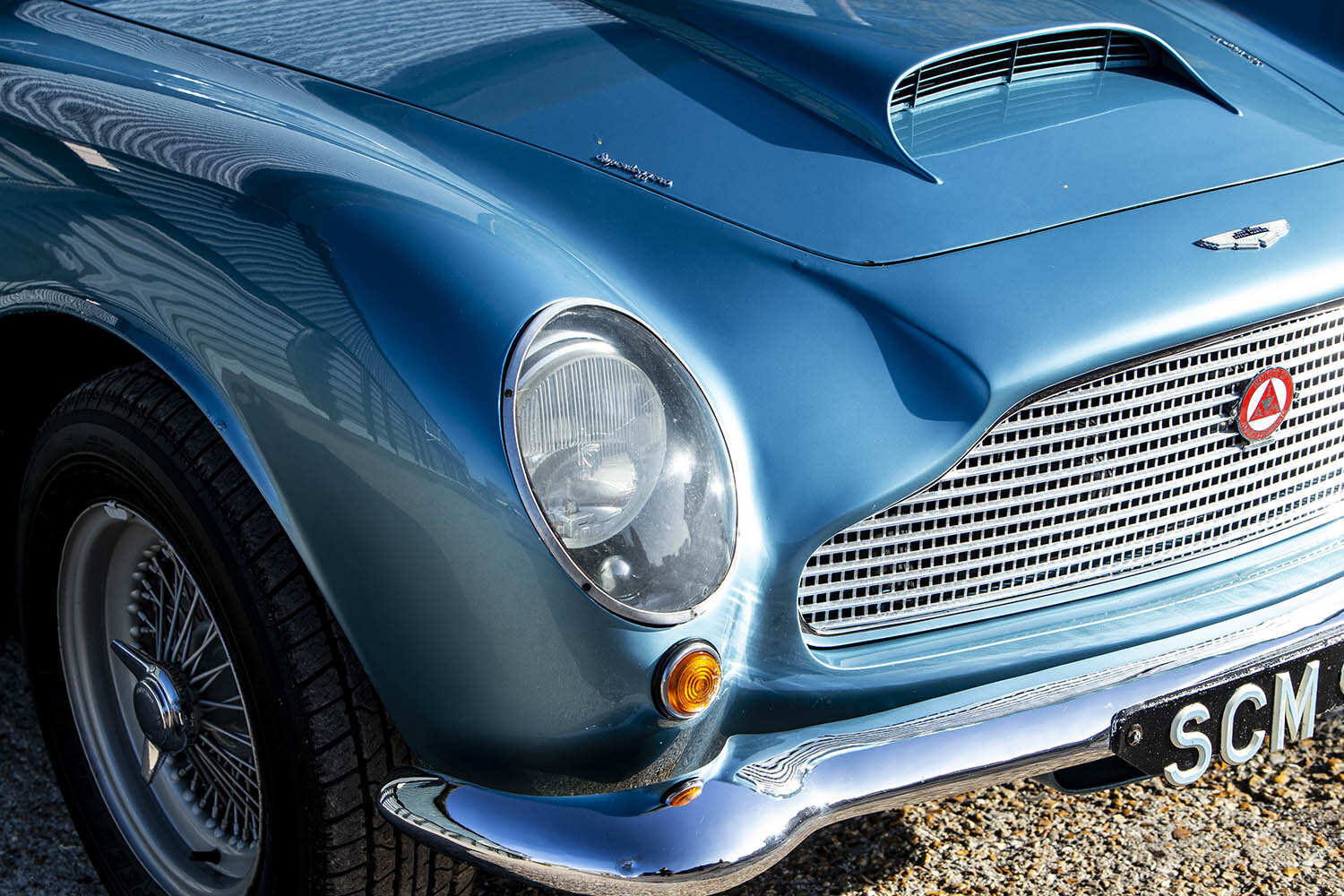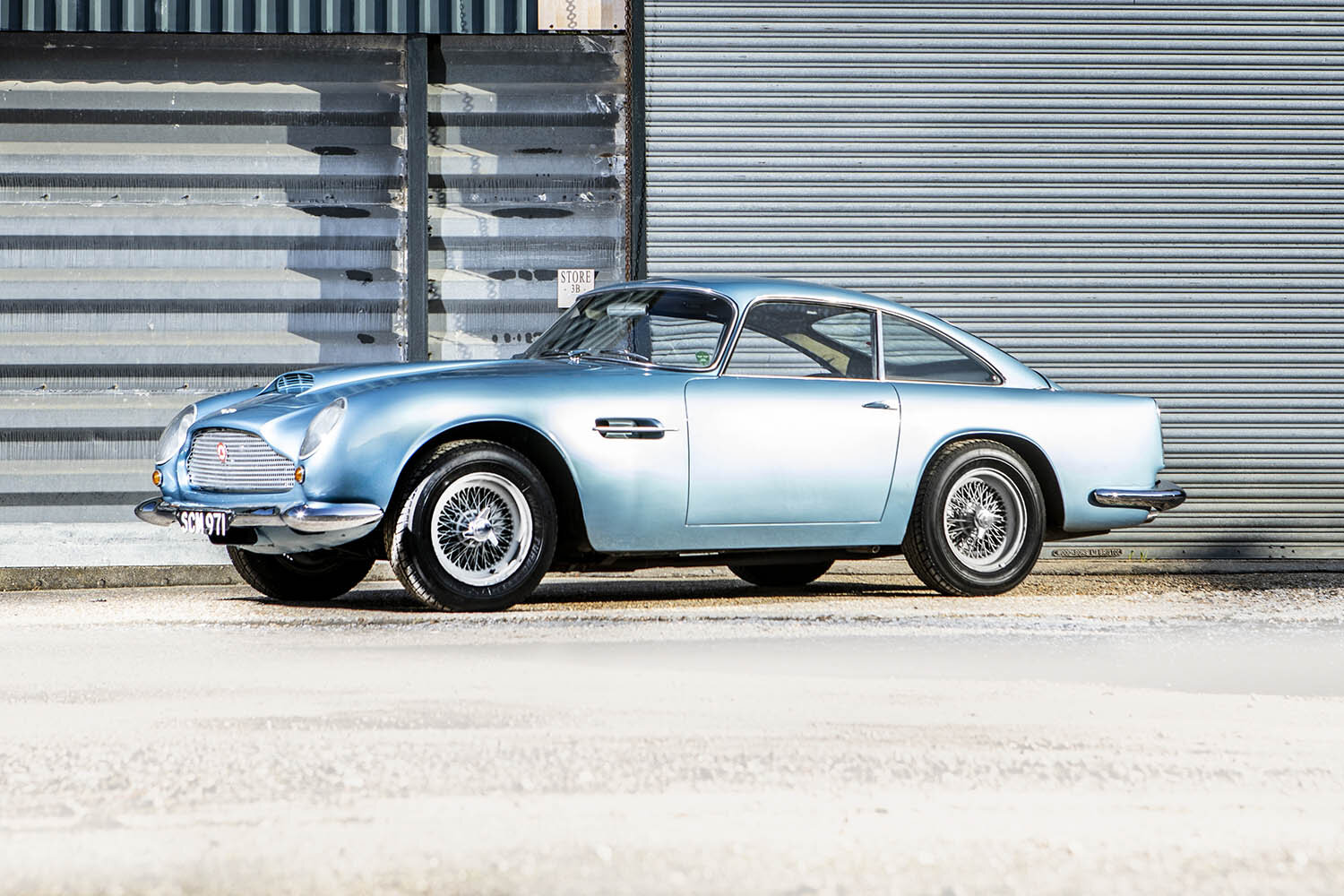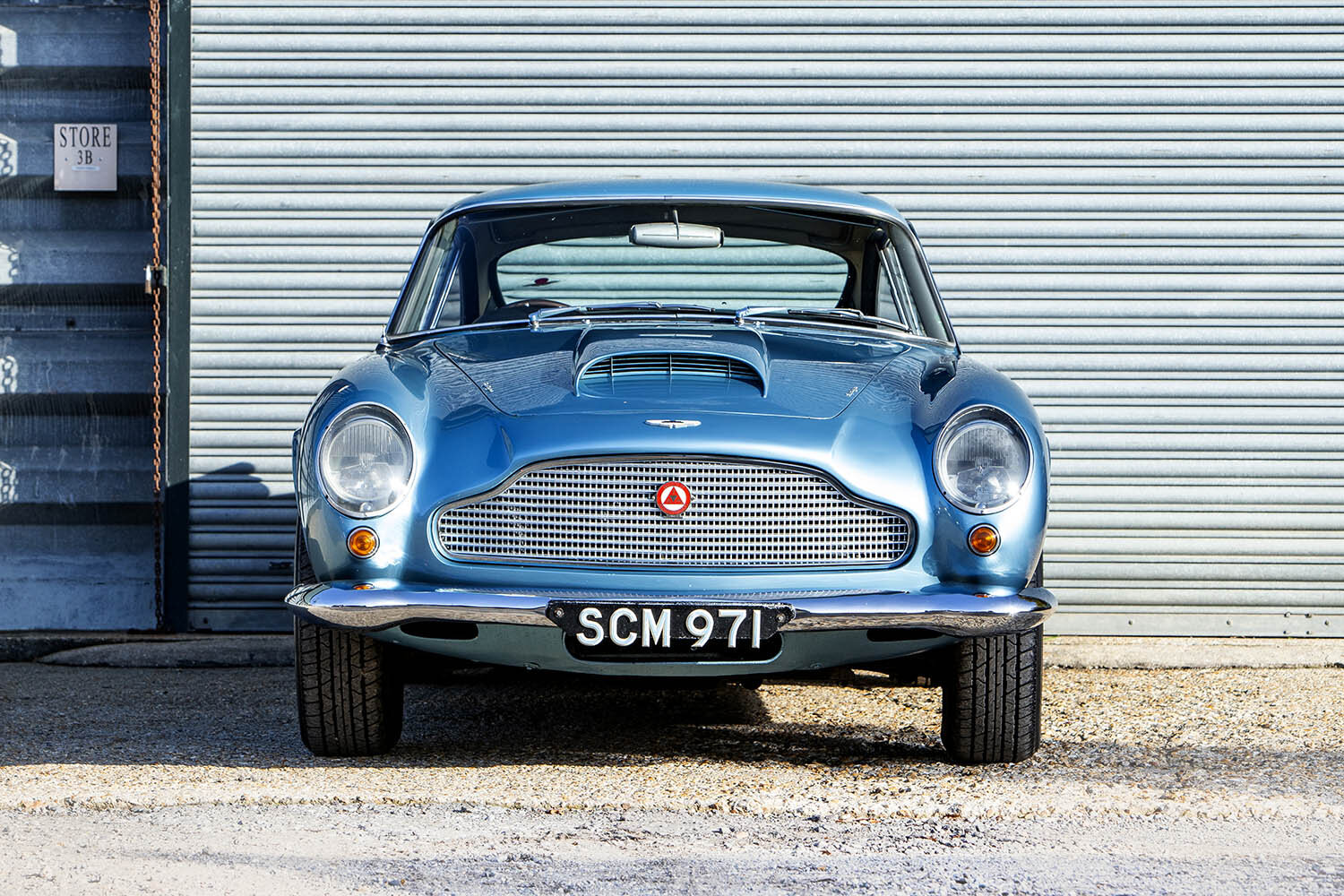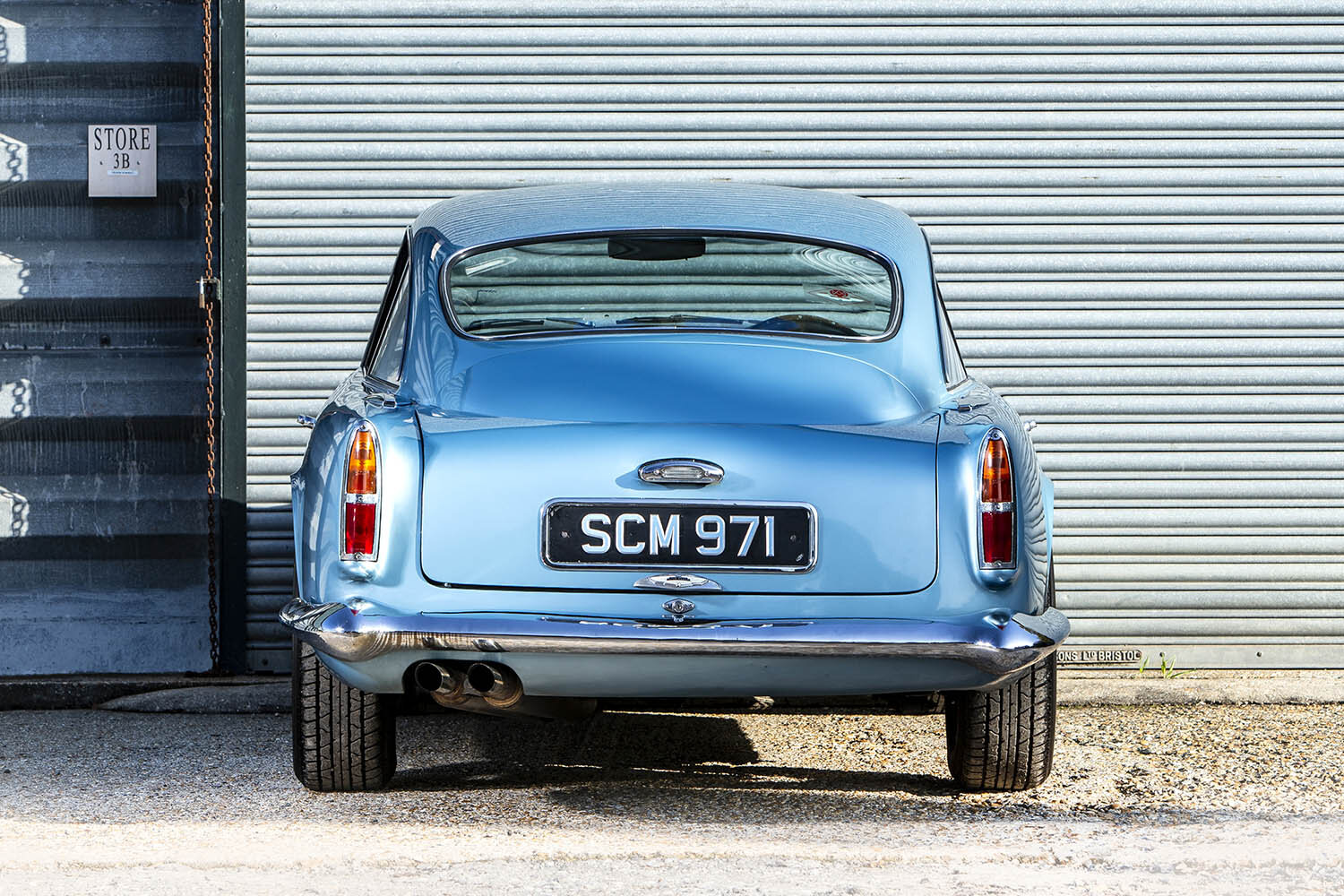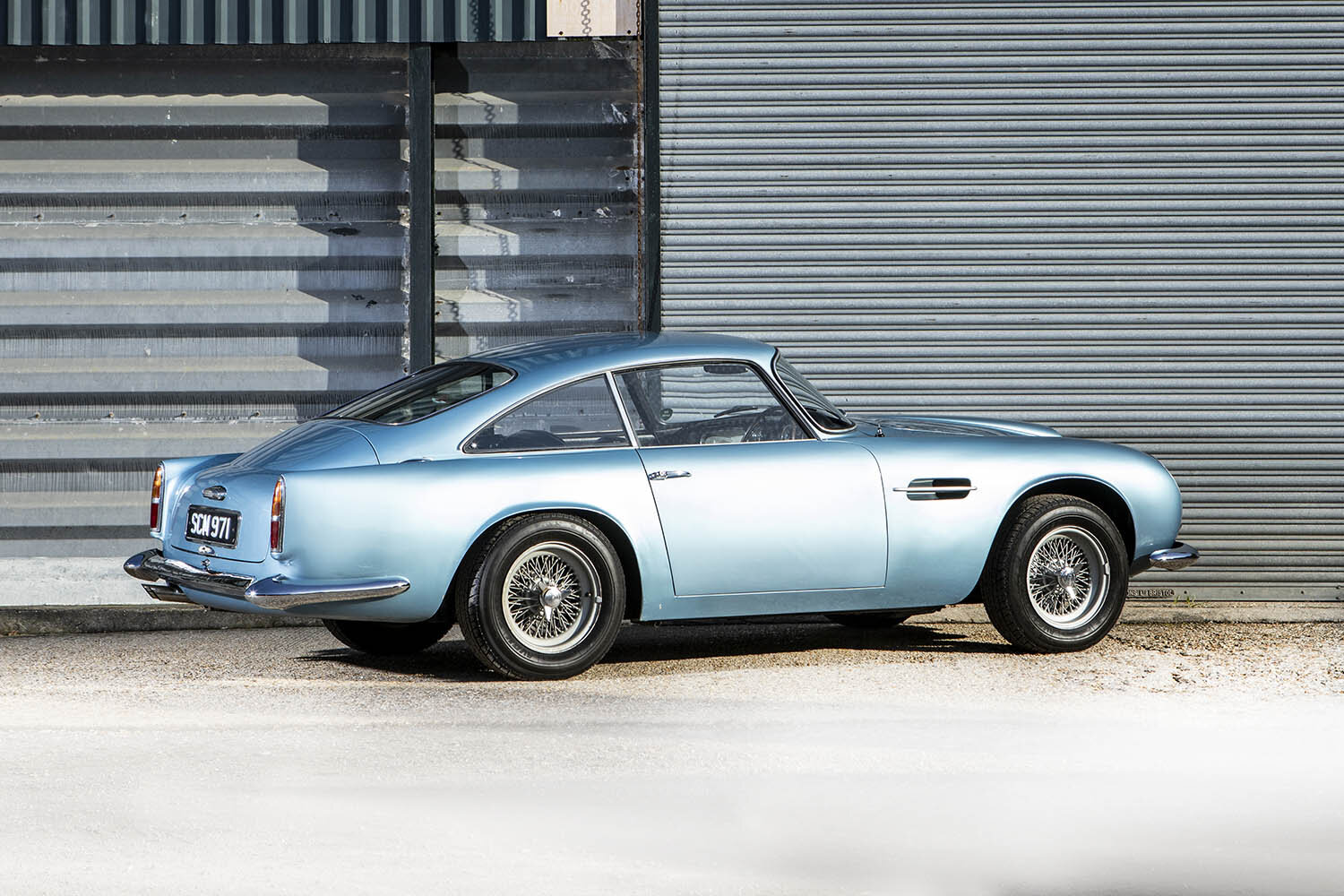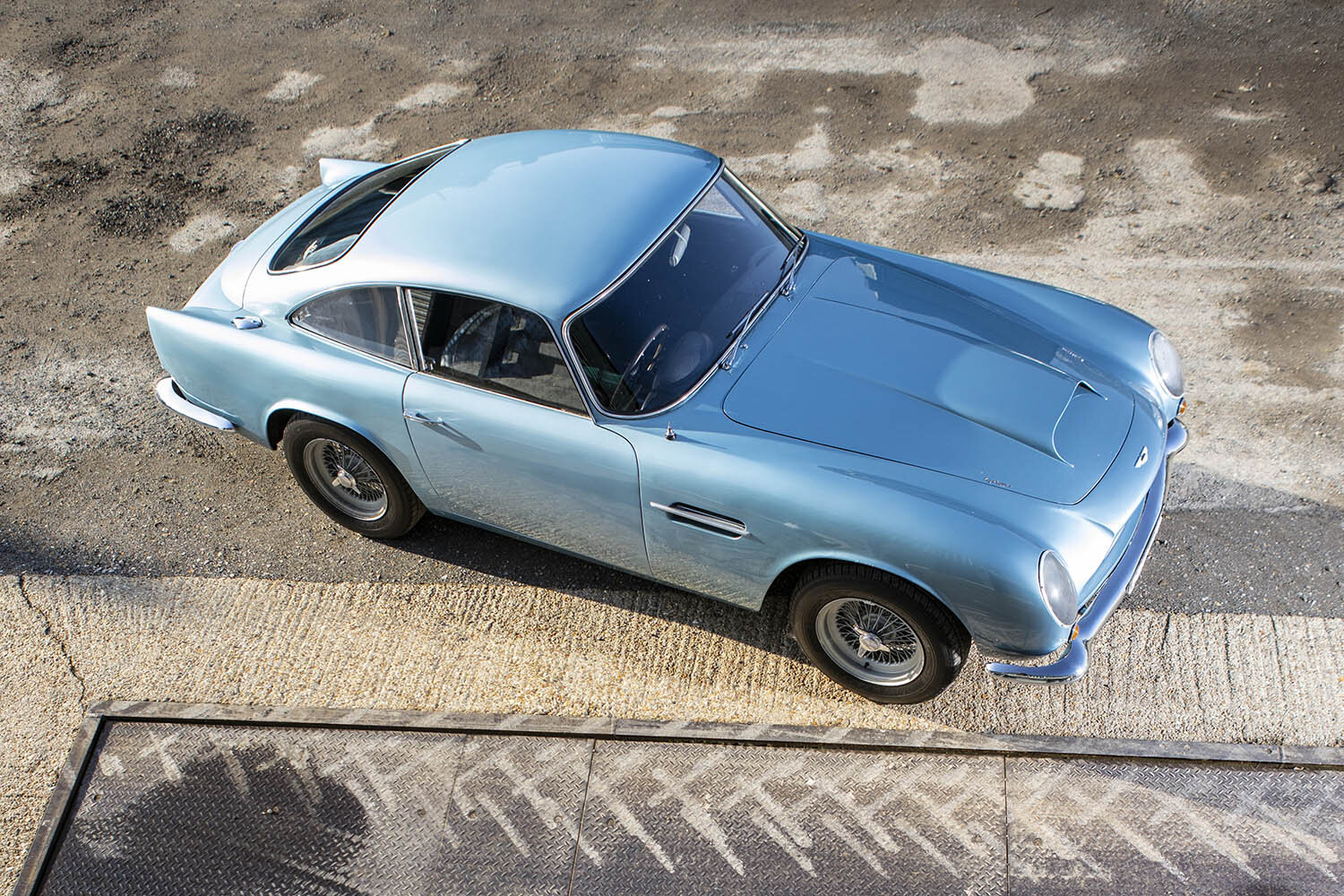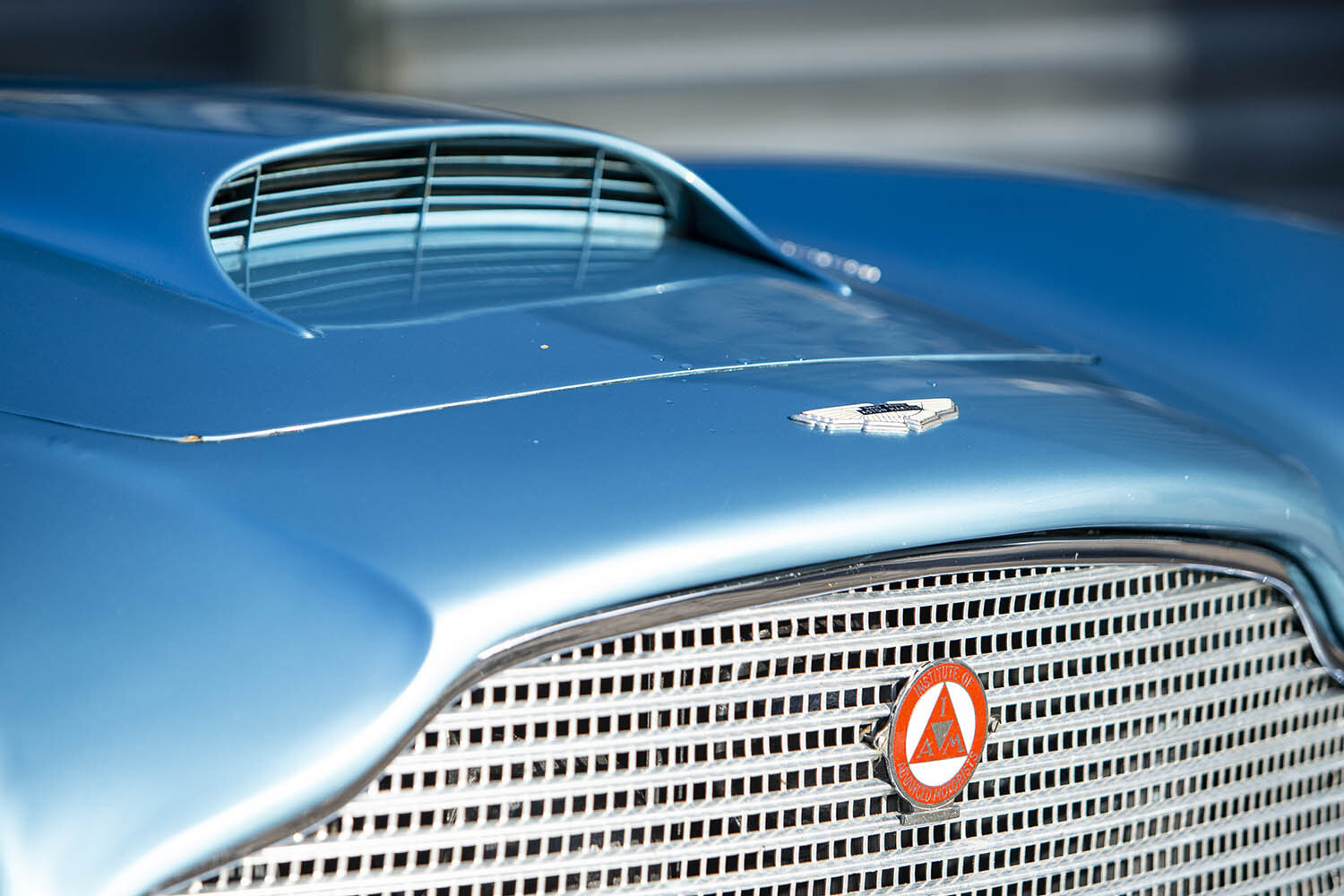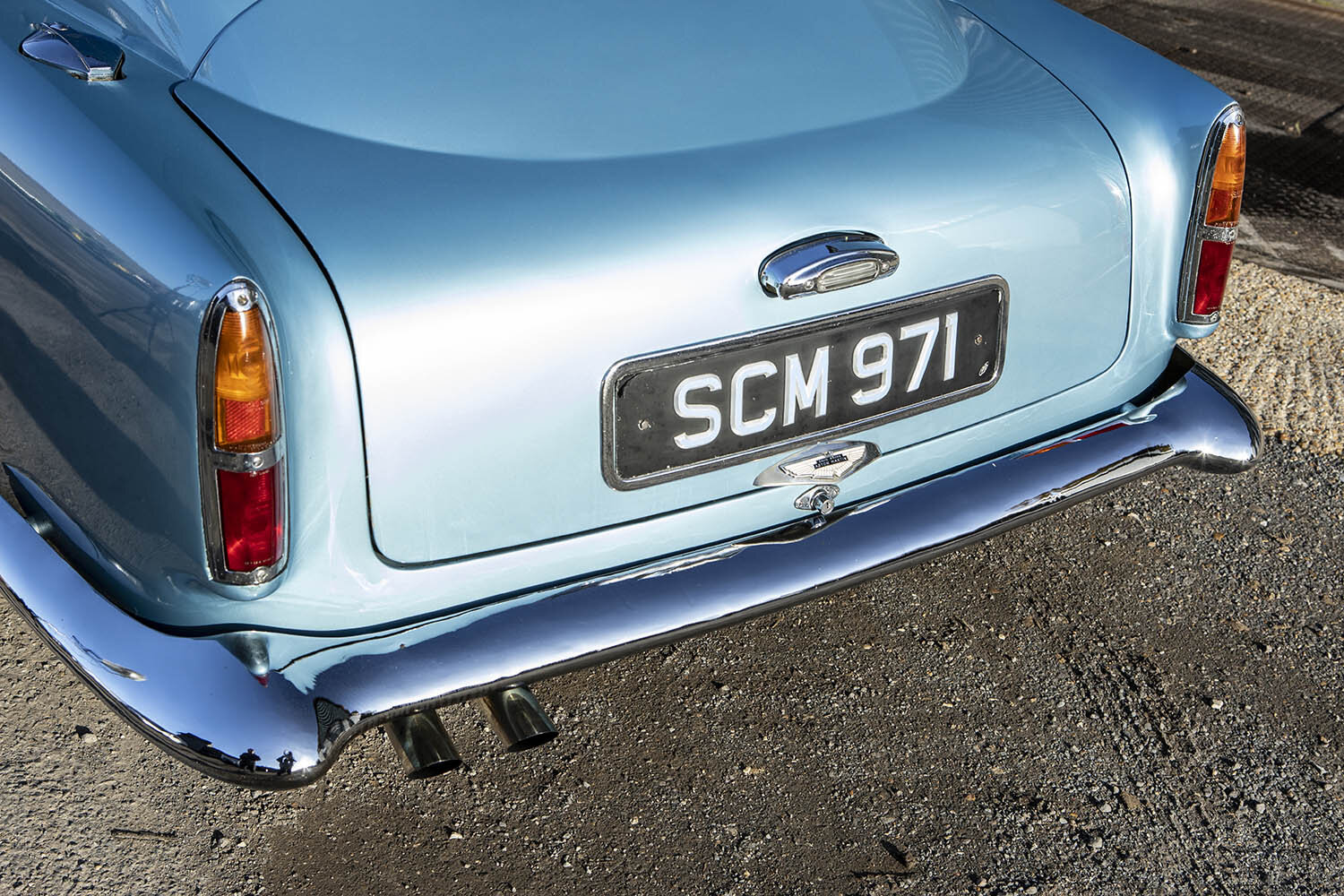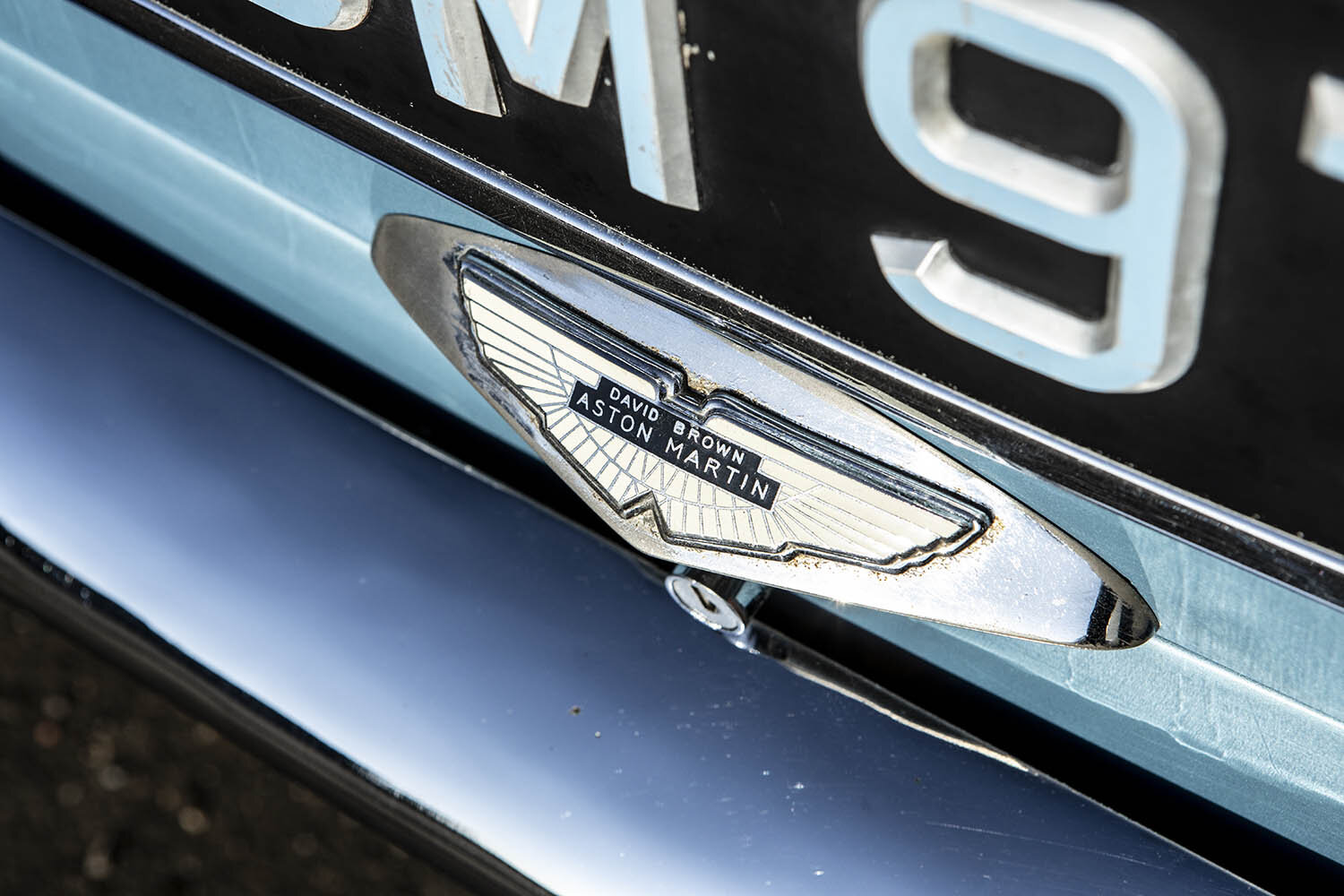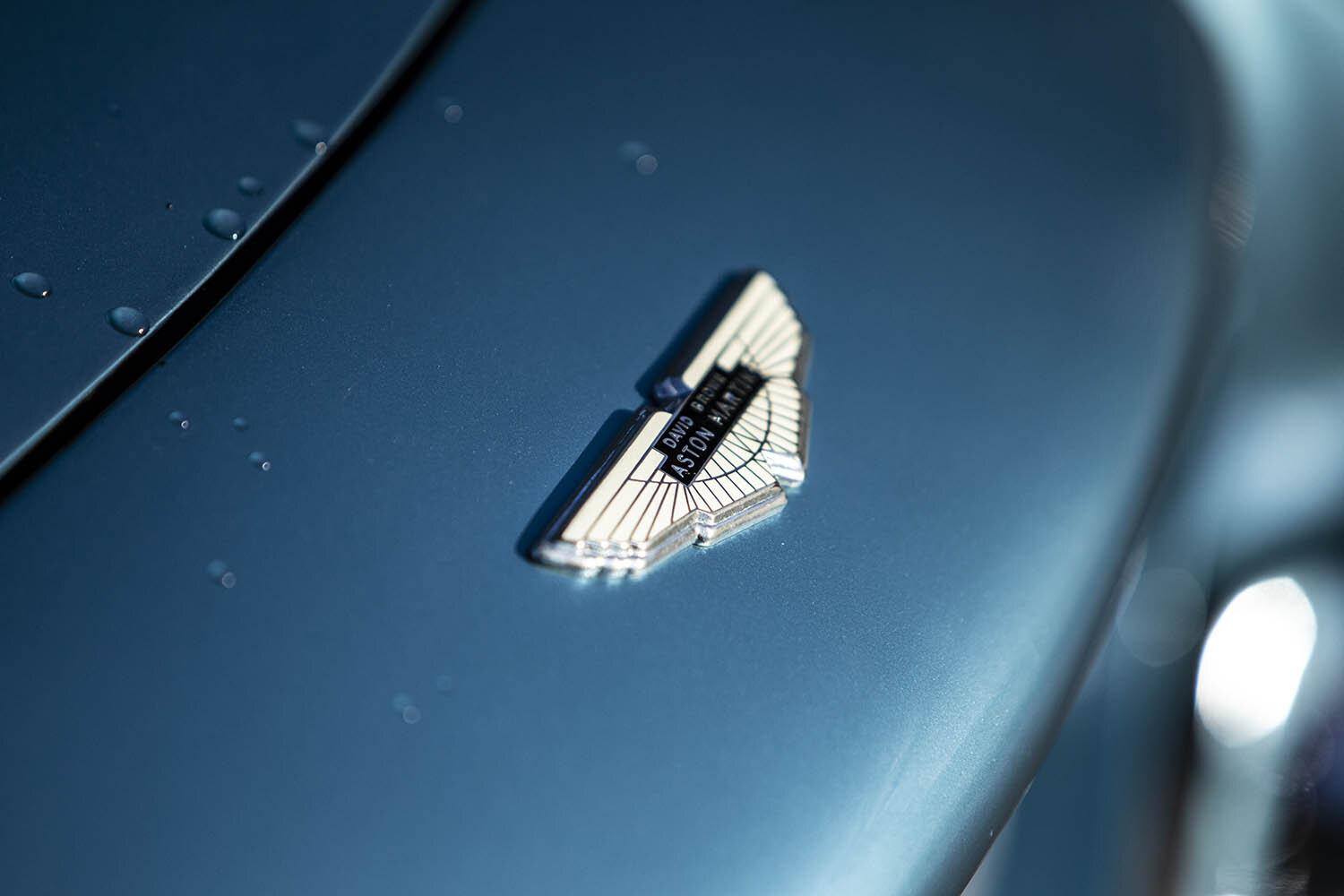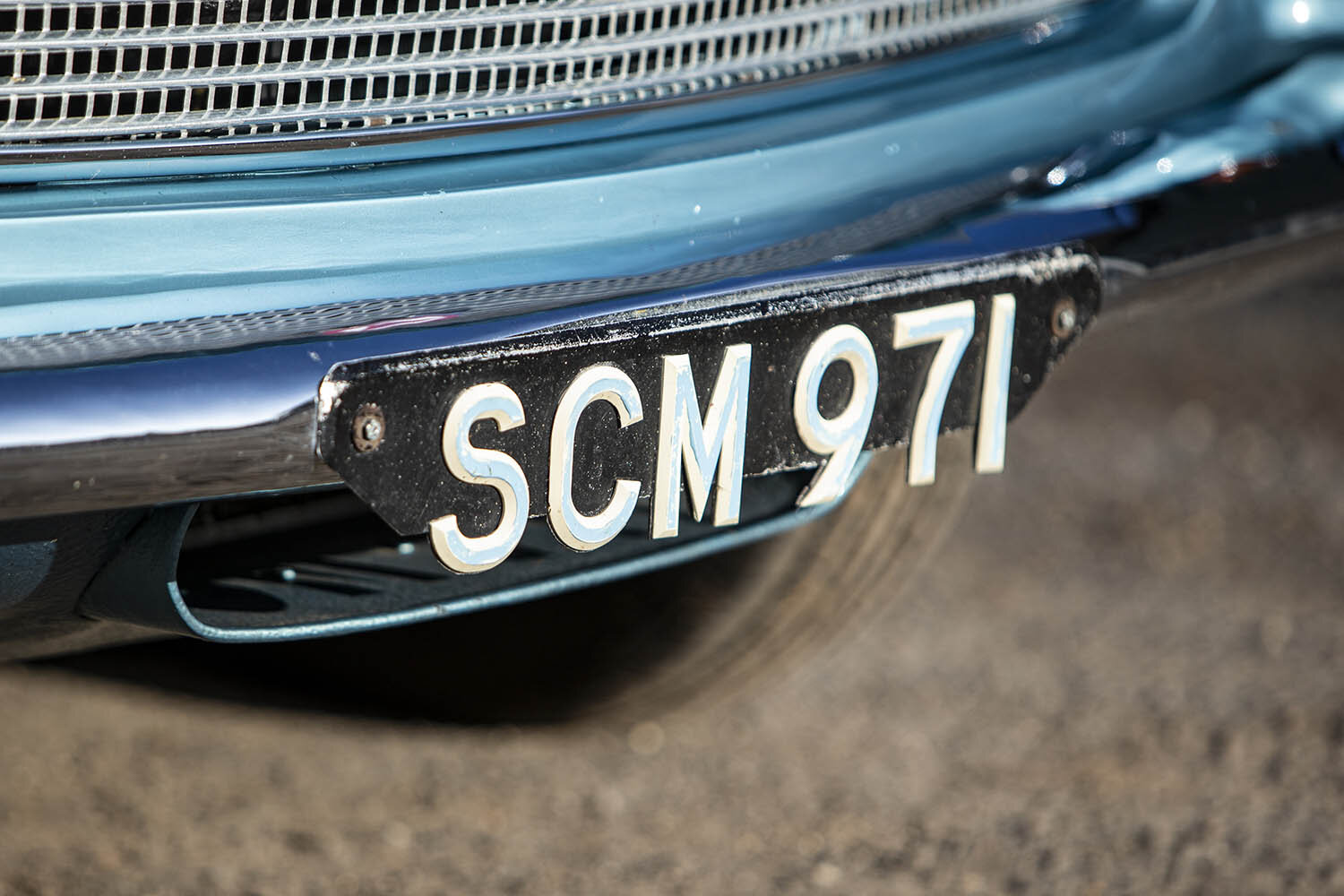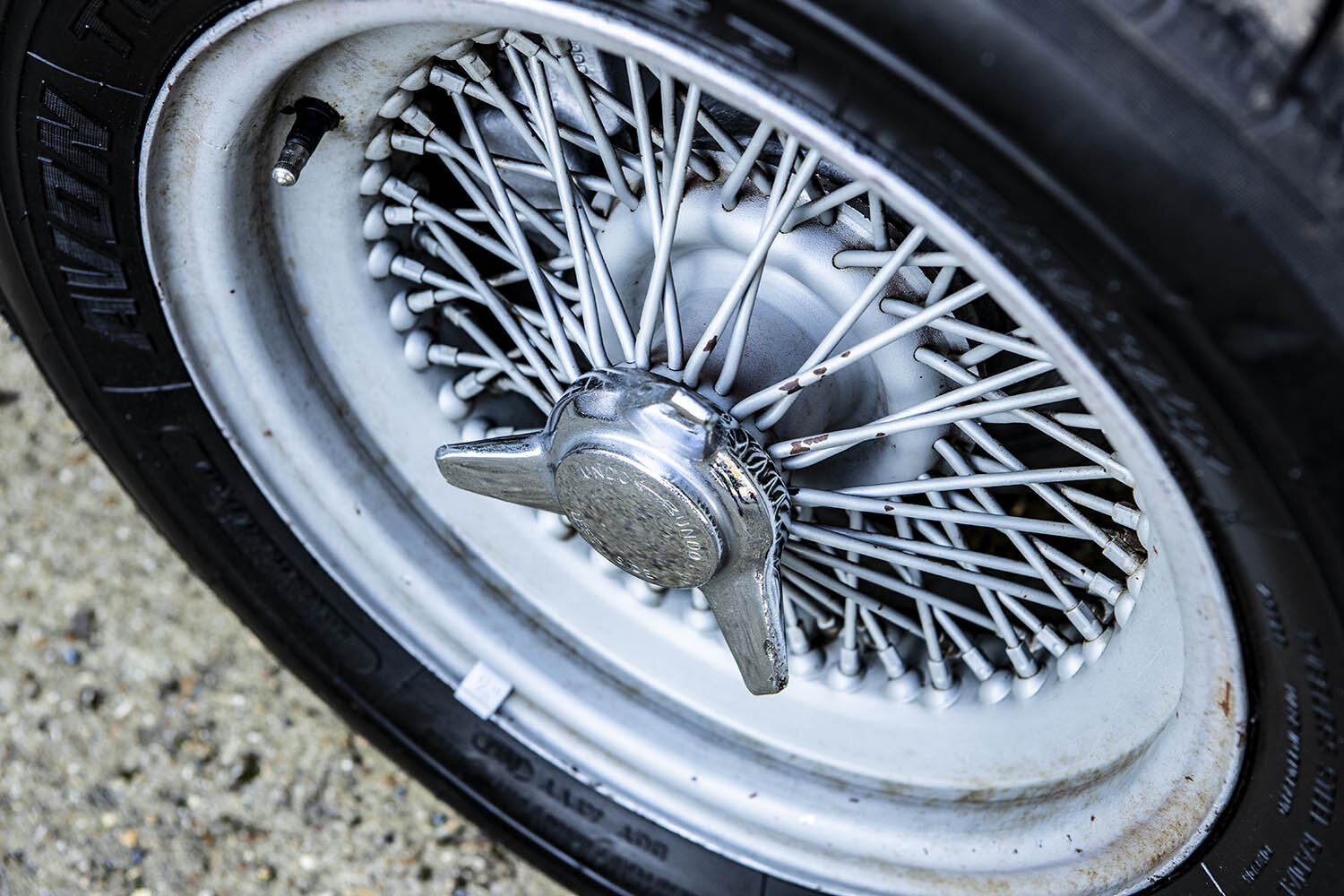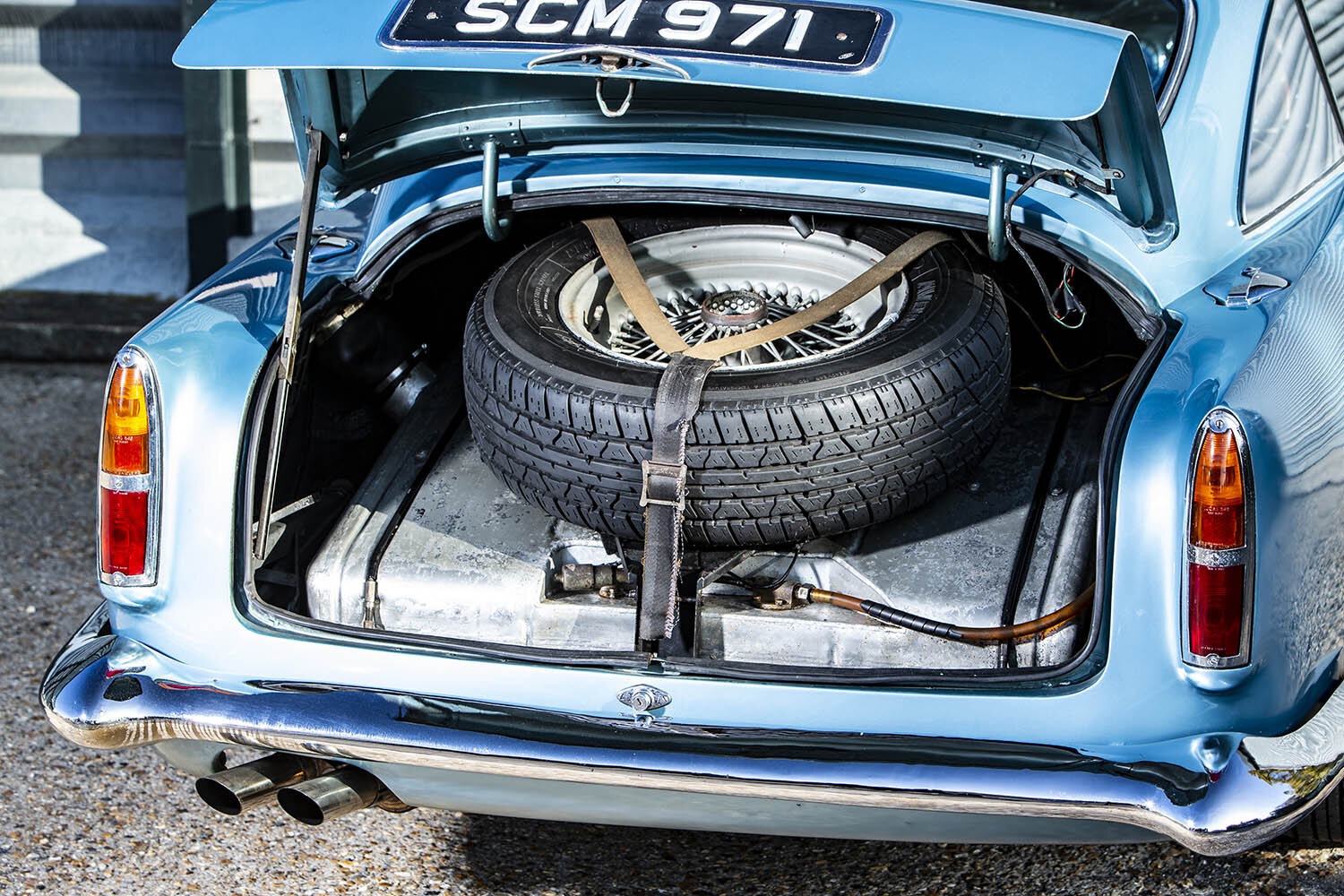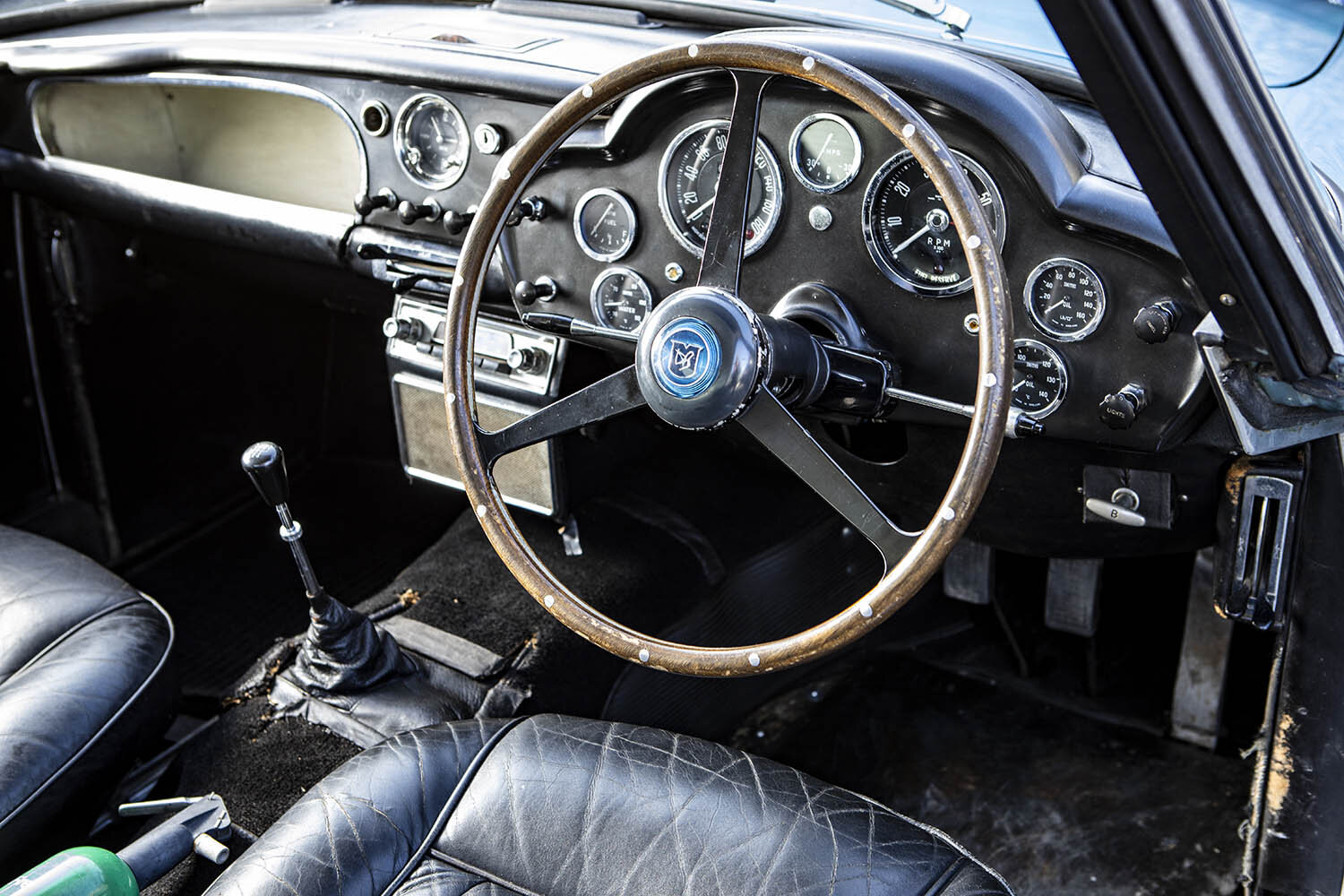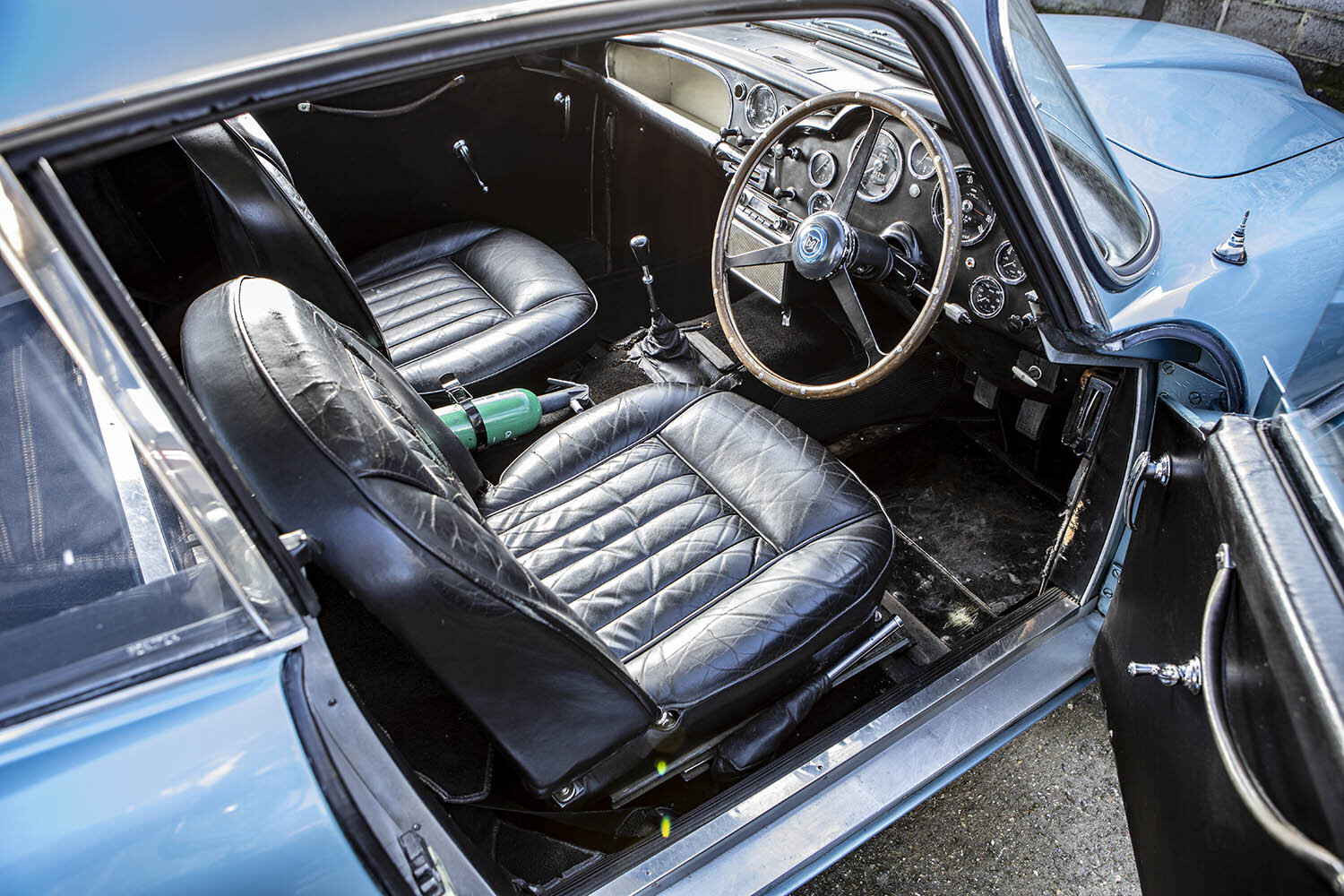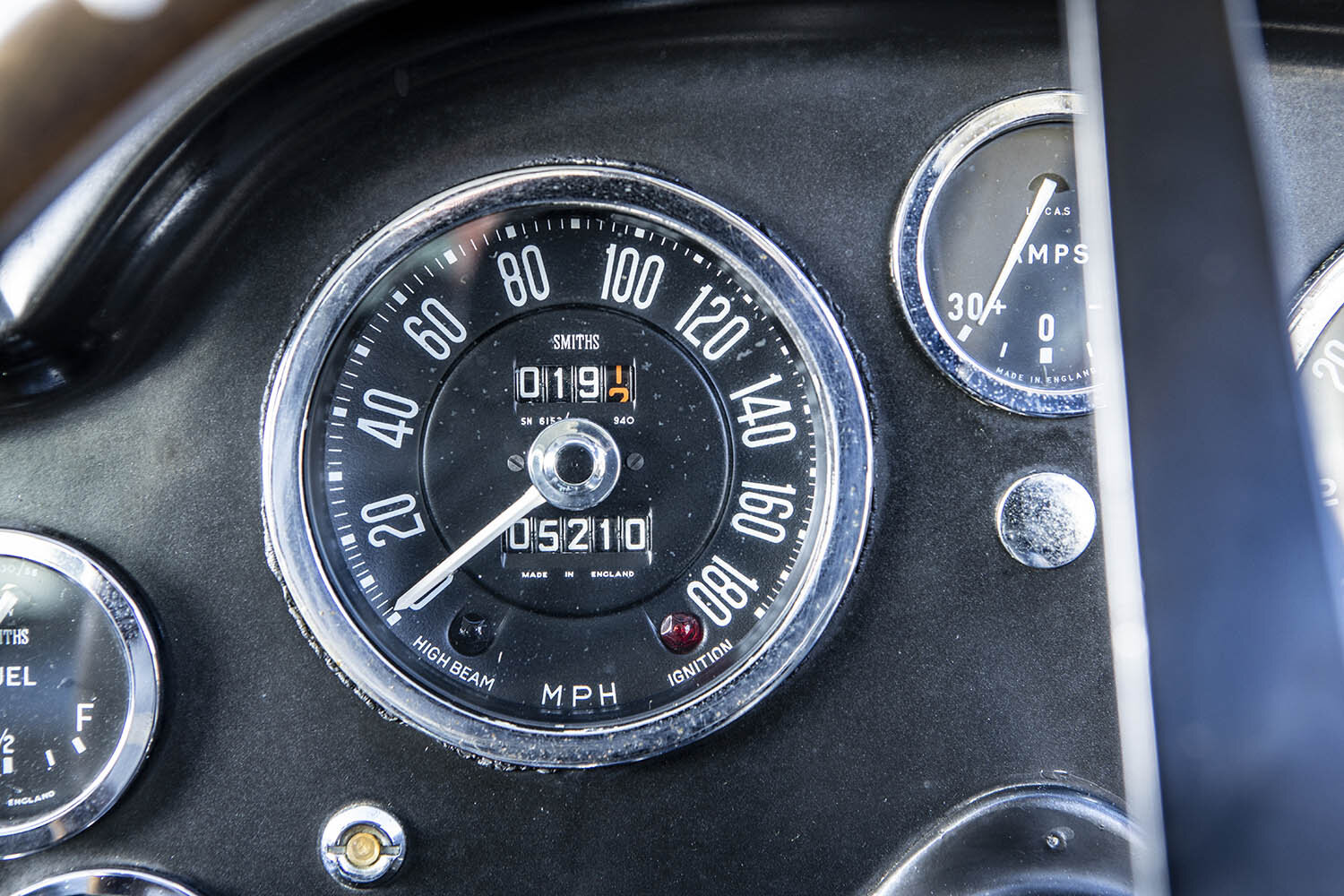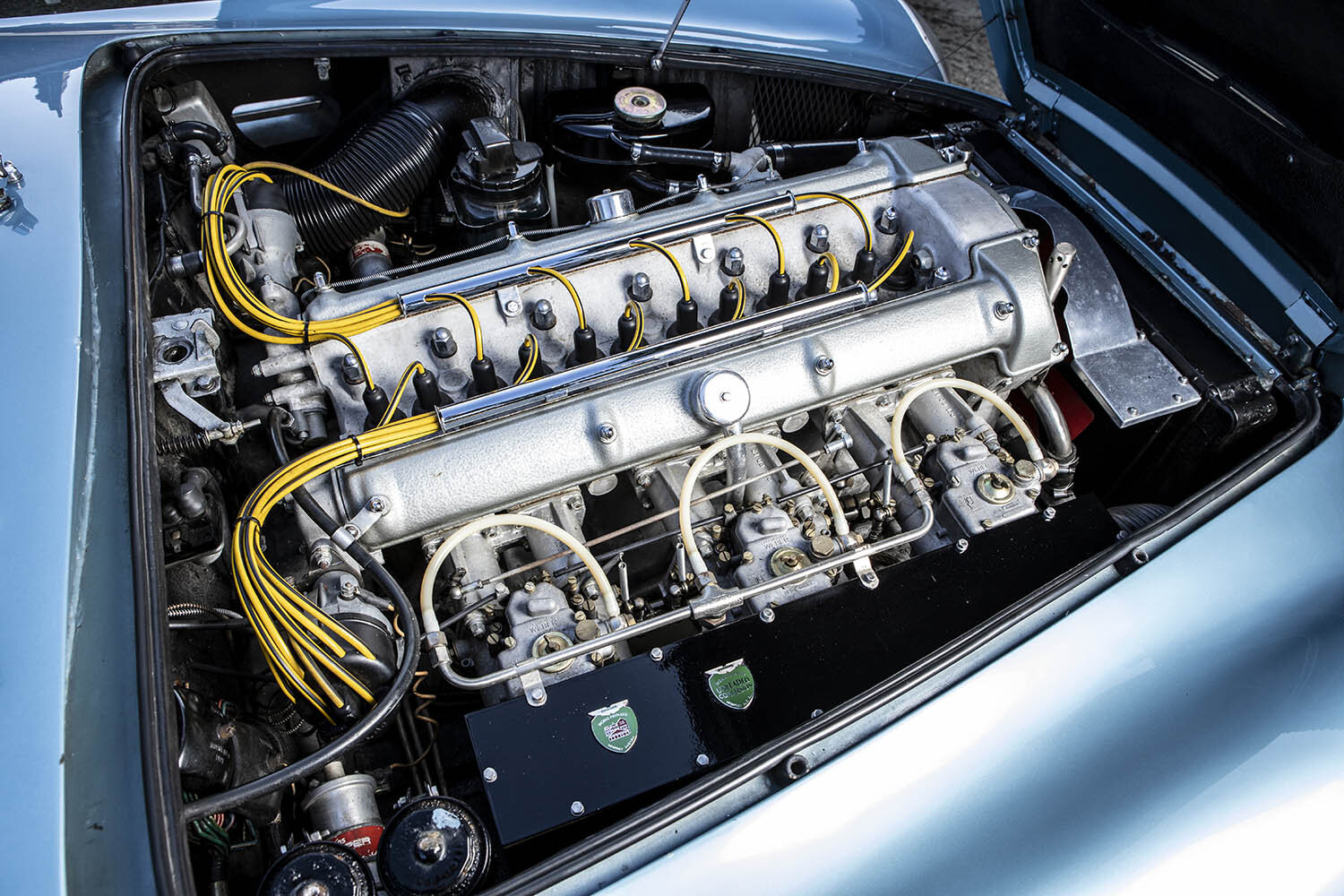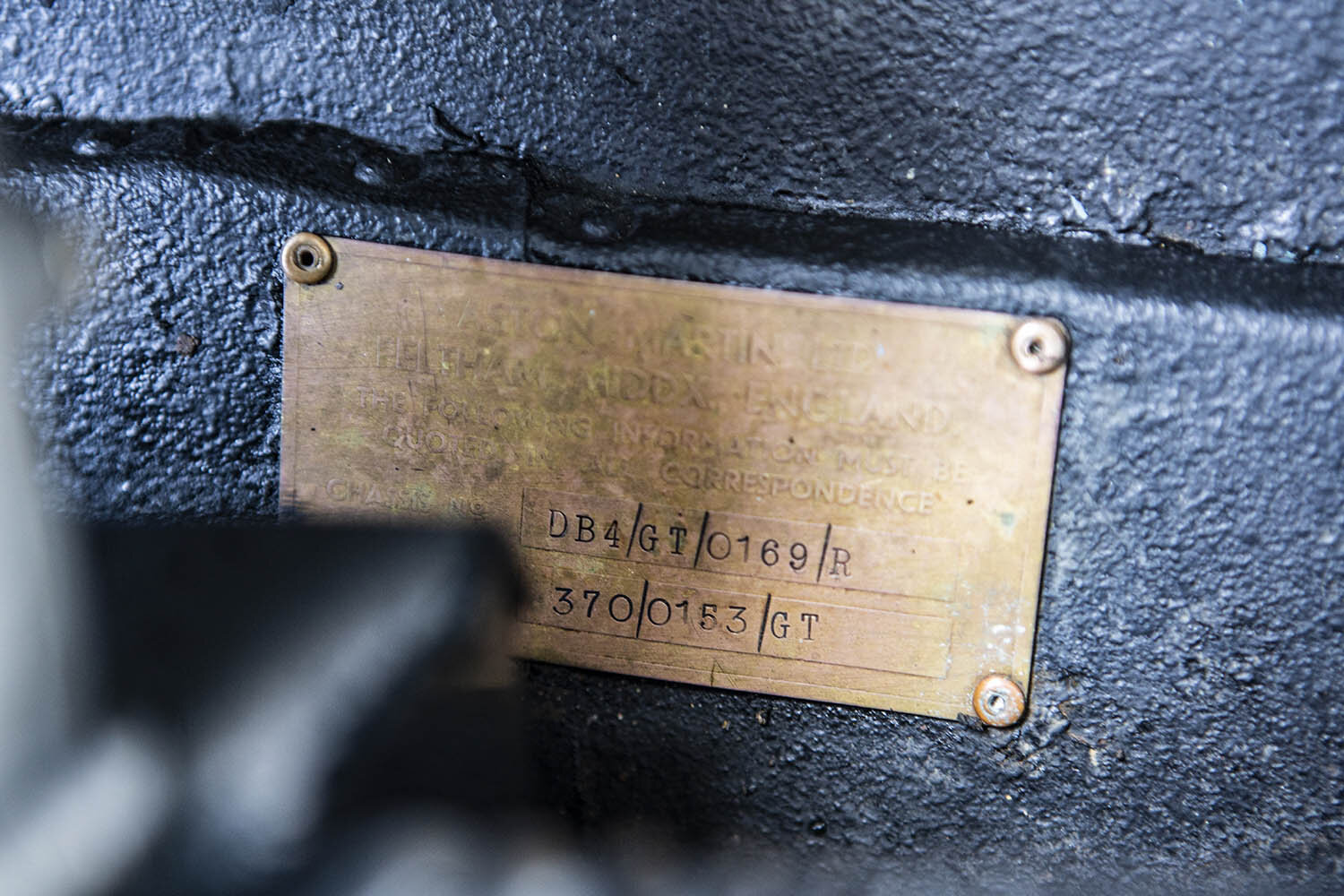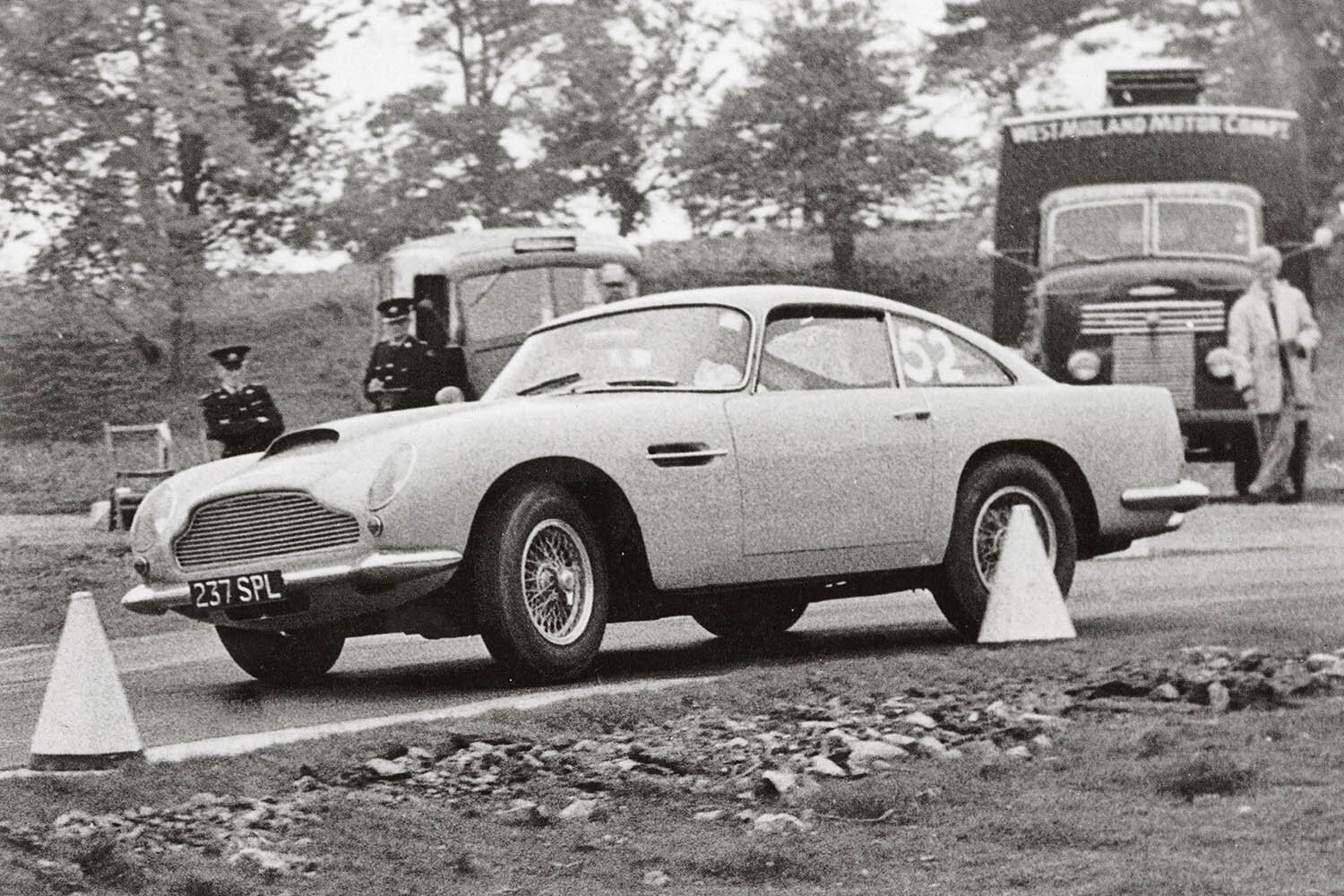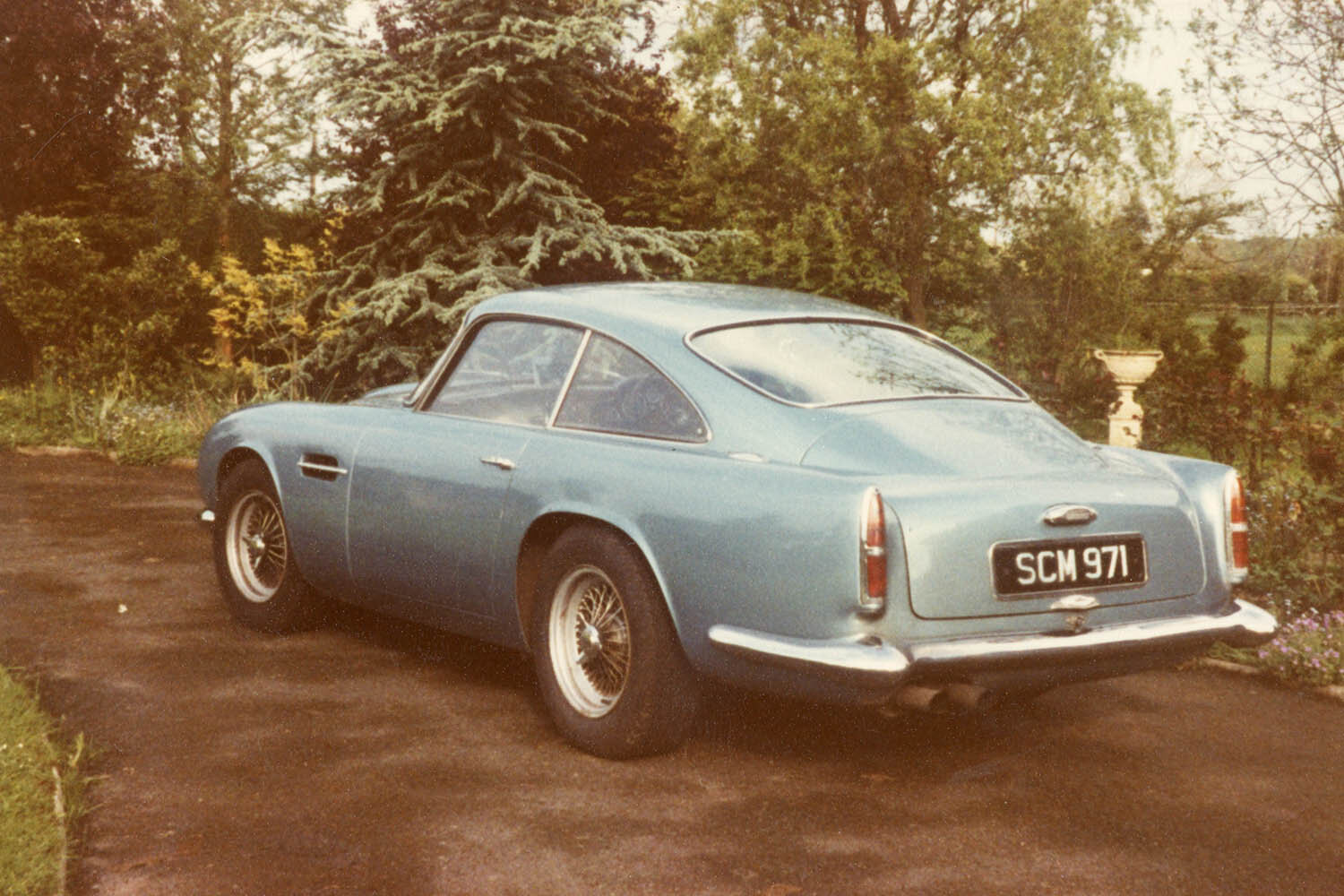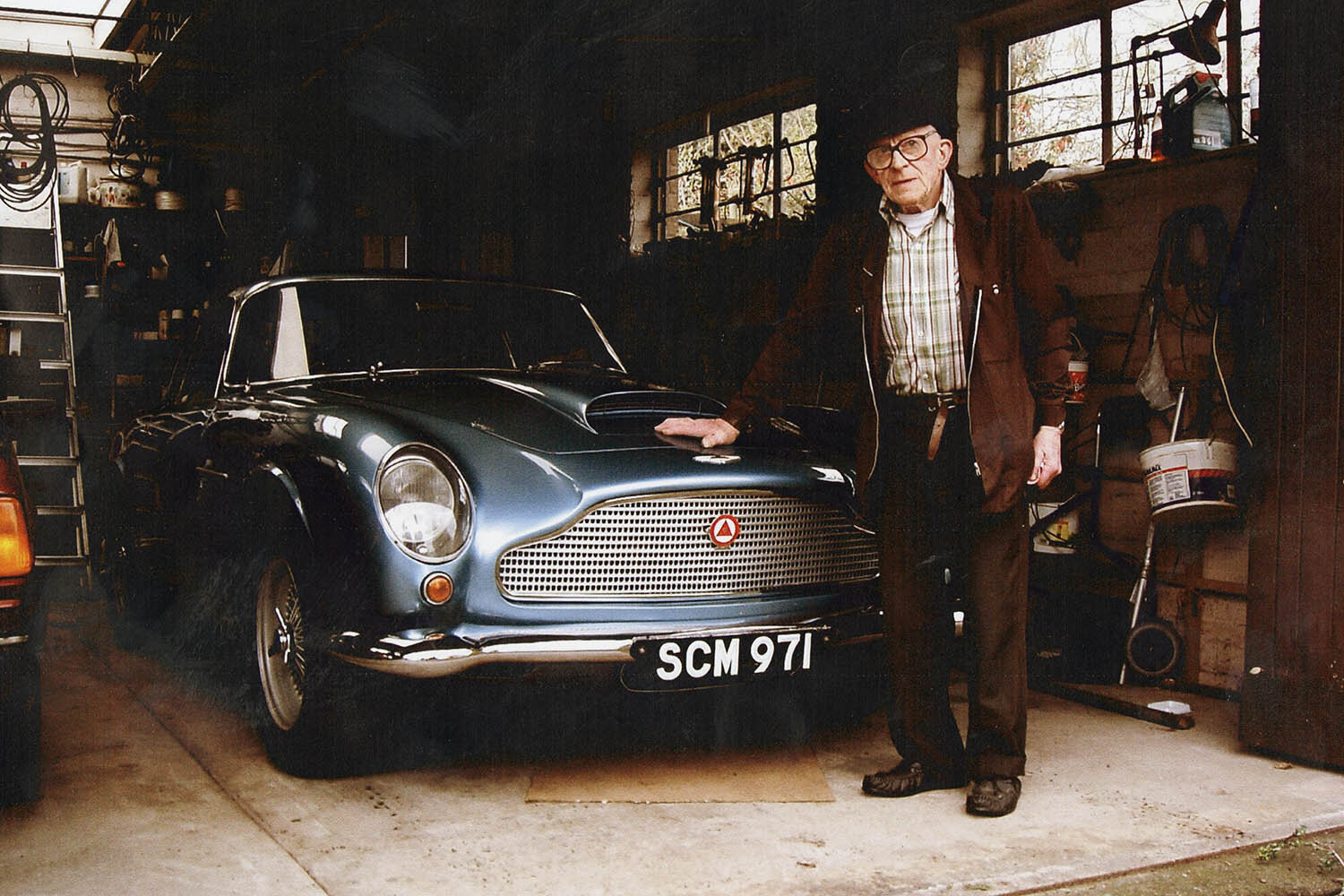The 'Missing Lightweight'
Launched at the London Motor Show in 1958, the Aston Martin DB4 emphatically demonstrated that a British manufacturer could better the Italians at their own game when it came to constructing the ultimate Gran Turismo. Its specification included a completely new steel platform chassis with disc brakes all round, and a race-developed twin-cam six-cylinder engine, all clothed in a perfectly proportioned aluminium body designed by Carrozzeria Touring of Milan. Overall, the DB4 was state-of-the-art for its time, a masterpiece of robust British engineering combined with exquisite Italian styling.
The new car's competition potential had been recognised from the outset and the factory lost no time in developing a lightweight version suitable for racing, the resulting DB4GT debuting at the 1959 London Motor Show. Extensive modifications to the standard car took 5" out of the wheelbase and replaced the rear seats with a luggage platform on all but a small number of cars. Together with lighter bodywork, these changes reduced the car's weight by around 200lb.
The GT used a tuned engine which, equipped with a twin-plug cylinder head and triple Weber carburettors, produced a claimed 302bhp, a useful increase over the standard car's 240bhp. Maximum speed depended on overall gearing but 153mph was achieved during testing with a 0-60mph time of 6.1 seconds recorded. The DB4 was also one of the first cars to go from standstill to 100mph and then brake to a dead stop on under 20 seconds, a tribute, in part, to its up-rated Girling brakes as used on Aston Martin's sports racers of the era.
Viewed from the front, the GT was readily distinguishable by its faired-in headlamps with Perspex covers, a feature later made standard on the DB5 and DB6. The rear screen and quarter-windows were Perspex on many examples; bumper over-riders were deleted and the wind-down windows were frame-less within the doors. Twin Monza quick-release competition fuel fillers were added atop the rear wings, leading to a large-capacity fuel tank mounted flat in the boot. GTs were fitted as standard with lightweight Borrani 42-spoke wire wheels with alloy rims and three-ear 'knock-offs'.
The DB4GT offered a strong challenge to the prevailing Ferrari dominance in GT racing, enjoying numerous victories. For recognised racing teams, the DB4GT was supplied in lightweight specification. The lightweight version made its debut at Goodwood in 1960, Stirling Moss winning at the wheel of Tommy Sopwith's Team Endeavour entry.
Aston Martin built a mere 75 DB4GTs (nine to lightweight specification) plus further 19 Zagato-bodied variants, one Bertone-bodied special, and five 'Team' or 'Development Project' cars. Of these 75 examples, 45 were supplied in right-hand drive form and 30 were left-hand drive. Amongst the most beloved of all Astons, the DB4GT remains unmatched for its unique combination of performance and roadability.
This is the sixth from last DB4GT, chassis number '0169/R' and is one of only nine cars completed to lightweight specification by the factory. Typically, for the lightweight cars, much of the steel structure in the chassis is perforated, and panels are cut out of the floor and replaced with aluminium. The floor under the fuel tank and rear parcel shelf is made from aluminium, as is the engine bay bulkhead. The glove box lid is deleted and the door panels are simpler, while all the windows aside from the screen are made from Perspex. Mechanically the cars were to standard GT specification but it is certain in the case of one lightweight and probably in others, that the engine was a 'blueprint' built in the Feltham competition department.
Originally registered '237 SPL', the DB4GT was raced by Phil Scragg, a circuit-racing star of the early 1950s, who would go on to become even better known as a hill climb exponent during the 1960s.
In April 1962 the DB4GT was returned to the factory and fitted with the standard 3.54:1 ratio rear axle. At the same time a radio was fitted and the Perspex wind-up windows replaced with glass. The car's second registered owner, from 9th April '62, was Automatic Laundry Ltd (K C Rothery) of Prenton, Cheshire, as confirmed by the accompanying original buff logbook. The latter records the late Malcolm Cramp as next owner, from April 1965, while the change of registration from 'KCR 123' to 'SCM 971' is dated 24th March '65.
Bonhams will be offering this very special 1961 Aston Martin DB4GT 'Lightweight' at their upcoming Bond Street Sale held on the 7th December. It’s estimated value is between £2m - £3m.
Photos © Courtesy of Bonhams.

